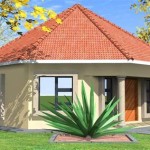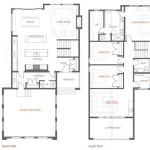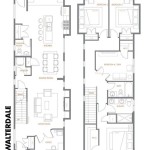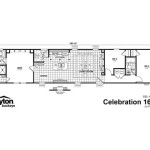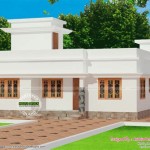Underground House Floor Plans: A Comprehensive Guide
Underground houses, also known as earth-sheltered homes, offer a unique blend of energy efficiency, privacy, and integration with the natural landscape. A crucial aspect of building an underground home is the floor plan, which requires careful consideration of factors like natural light, ventilation, and structural integrity. This article explores the key considerations and common features of underground house floor plans.
Key Considerations for Underground House Floor Plans
Designing an underground house requires a different approach than conventional above-ground construction. Several factors influence the layout and design of these unique homes:
- Natural Light and Ventilation: Maximizing natural light and ensuring adequate ventilation are paramount in underground homes. Strategic placement of windows, skylights, and courtyards can bring in sunlight and fresh air.
- Moisture Control and Waterproofing: Protecting the structure from moisture and water damage is critical. Proper waterproofing techniques and drainage systems are essential.
- Structural Integrity: The earth surrounding the house exerts significant pressure. The structure must be designed to withstand this pressure and maintain stability.
- Thermal Performance: Earth-sheltered homes benefit from the earth's stable temperature, leading to energy efficiency. The floor plan should optimize this thermal mass effect.
- Accessibility and Egress: Ensuring easy access and safe egress in case of emergencies is crucial. Well-planned entrances, exits, and hallways are necessary.
Common Features of Underground House Floor Plans
While underground house designs vary widely, certain features are often incorporated to address the unique challenges and opportunities of this building style:
- Open Floor Plans: Open floor plans can create a sense of spaciousness and allow natural light to penetrate deeper into the home.
- Central Courtyards or Atriums: These provide a source of natural light and ventilation for interior rooms, creating a connection to the outdoors.
- South-Facing Windows and Skylights: Orienting windows and skylights towards the south maximizes solar gain and natural light exposure.
- Earth Berms and Sloped Roofs: These features help integrate the house into the landscape and provide additional insulation.
- Walk-Out Basements or Lower Levels: These can provide direct access to the outdoors and create a transition between the underground and above-ground spaces.
Types of Underground House Floor Plans
Underground houses can be categorized into different types based on their integration with the landscape:
- Fully Underground: These homes are completely buried beneath the earth, offering maximum energy efficiency and privacy.
- Partially Underground (Earth Bermed): These homes are built into a slope or surrounded by earth berms, blending seamlessly with the terrain.
- Built into a Hillside: These homes utilize the natural slope of a hill to create a multi-level structure with varying degrees of earth sheltering.
Advantages of Underground House Floor Plans
Underground homes offer numerous advantages:
- Energy Efficiency: The earth's stable temperature reduces heating and cooling costs.
- Soundproofing: The earth surrounding the house provides excellent sound insulation.
- Protection from Extreme Weather: Underground homes are more resistant to storms, high winds, and wildfires.
- Privacy: The earth sheltering provides natural privacy from neighbors and the outside world.
- Integration with the Landscape: Underground homes can blend seamlessly with the natural environment.
Challenges of Underground House Floor Plans
While underground homes offer many benefits, there are also challenges to consider:
- Higher Initial Construction Costs: Excavation, waterproofing, and structural reinforcement can increase upfront costs.
- Moisture Control: Proper waterproofing and ventilation are crucial to prevent moisture problems.
- Limited Natural Light: Careful planning is required to maximize natural light penetration.
- Site Selection: Not all sites are suitable for underground construction. Soil type, water table, and slope are important factors.
Planning and Design Process
The planning and design process for an underground house requires specialized expertise:
- Site Analysis: A thorough site analysis is essential to assess soil conditions, water table, and topography.
- Architectural Design: An experienced architect specializing in earth-sheltered homes can develop a plan that addresses the unique challenges and opportunities of this building style.
- Engineering Considerations: Structural engineers must ensure the structural integrity of the home, considering the earth pressures and other factors.
- Building Codes and Regulations: Local building codes and regulations for underground construction must be adhered to.
Choosing the Right Underground House Floor Plan
Choosing the right floor plan involves careful consideration of individual needs and preferences, site conditions, and budget. Working closely with experienced professionals can ensure a successful and satisfying underground home building experience.

Lovely Underground Home Plans 4 House Homes Earth Sheltered

File Underground World Home Floor Plan Png Wikipedia

26 Luxury Hiline Home Plans Underground Homes House Earth Sheltered

Earth Sheltered Plans And Bermed Homes

Rockspring Hill Berm Home Underground House Plans And More Mediterranean Style

Earth Sheltered Plans And Bermed Homes

Superb Underground Home Plans 2 Homes House Beach

Earth Sheltered Plans And Bermed Homes

I Wish Underground Homes Earth Sheltered

Cedar Haven Home Design Earth Sheltered 3 4 Br Ba Homes Underground House Plans


